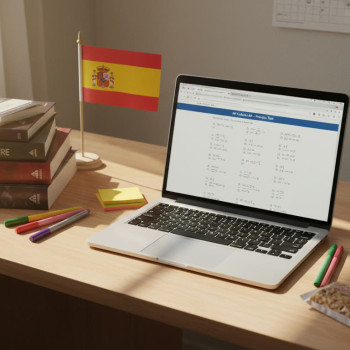Introduction: Two Worlds, One Mathematical Heart
For many students and parents navigating international curricula, the moment you line up the A Level Math or Further Mathematics syllabus beside AP Calculus BC or AP Statistics is illuminating — and a little unnerving. They share a lot of DNA: common concepts, the same deep love of problem solving, and a shared goal of preparing students for probability, data thinking, and calculus-level reasoning. Yet the experience of studying them can feel surprisingly different.
This guide is written for students and parents who want to understand what genuinely feels new when switching between A Level Math/Further and AP Calc BC/Stats. I’ll explain the real differences in emphasis, exam culture, notation and pacing, and give practical study strategies. You’ll find concrete examples, a comparative table for quick reference, and suggestions for study routines that respect both curricula. Along the way I’ll note how Sparkl’s personalized tutoring — 1-on-1 guidance, tailored study plans, expert tutors, and AI-driven insights — can fit naturally into a student’s preparation plan to smooth the transition.
Why These Comparisons Matter
At first glance, the two systems look interchangeable: derivatives, integrals, probability theory, hypothesis tests. But curriculum design, assessment style, and even small notation differences shape how students learn and perform. Understanding those nuances helps students study smarter — not just longer — and saves parents from panicked last-minute tutoring splurges.
Who benefits from this guide
- Students who studied A Levels and are taking AP exams (or vice versa).
- Parents trying to choose whether AP or A Levels better suit their child’s goals.
- College applicants who want to present their mathematical competence clearly on applications.

Big Picture Differences: Emphasis, Depth, and Assessment Style
Here are the headline contrasts that usually surprise students.
1. Assessment Style and Exam Mindset
A Level assessments — especially in Further Mathematics — emphasize proof-style reasoning, long-form problem solving, and multi-step arguments. You might find questions that reward a neat, rigorous derivation and a careful explanation of why an identity holds.
AP exams, particularly AP Calculus BC, focus on a mix of procedural fluency and applied problem solving. The AP exam includes multiple-choice questions that test fast reasoning and free-response questions that score well for correct method and clear final answers. AP Statistics often tests interpretation and context: reading data, explaining an inference, and choosing appropriate procedures.
2. Scope and Pacing
A Level Further Mathematics can dive deeper into abstract areas — complex numbers, detailed linear algebra, differential equations with emphasis on theory — where time is allowed to explore concepts at length across a year or two. AP courses are typically intense and compact; AP Calculus BC, for example, covers the equivalent of both Calculus AB and extra material (series, parametric, polar) in a school year, while AP Statistics packs statistical thinking and inference into one brisk sequence.
3. Notation and Conventions
Some notation differences are purely cosmetic but can trip up a student during an exam. For example, A Levels often use ‘sin^-1 x’ to denote inverse sine with careful textual context, while AP prefers arcsin(x) to reduce ambiguity. Another common source of confusion is interval notation and rounding conventions in statistics — signal these to your tutor early.
4. Applied vs Theoretical Flavor
AP Statistics is decidedly applied: interpretation of context, checking assumptions, and communicating conclusions in plain language are weighted heavily. A Level probability questions can be more formal, sometimes asking for derivations or proofs about distributions. In calculus, A Levels might expect more algebraic manipulation and theoretical justification, while AP emphasizes modeling, approximation and real-world interpretation (e.g., rate of change in a physical system).
Concrete Comparisons: What Feels New (And Why)
Now for the specifics. Below are common sticking points students mention when moving between systems.
Calculus: Speed, Series, and Approximation
- Series and Taylor expansions: AP Calculus BC expects practical fluency with Taylor and Maclaurin series — finding expansions, testing convergence, and applying them to approximation problems. If your A Level exposure was lighter on series, they will feel new and heavily tested.
- Speed of problem solving: AP’s multiple-choice section rewards quick, reliable techniques and smart approximations. Practice timed sections and learn shortcuts for common integrals and derivatives without sacrificing understanding.
- Modeling and application: AP questions frequently place calculus in applied contexts (velocity, population models, accumulation functions), so translating a word problem into equations quickly is an essential skill.
Statistics: Storytelling, Interpretation, and Tests
- Context-first answers: AP Statistics values answers written in context — not just numerical output. Saying “reject H0” without relating it back to the situation is a missed opportunity.
- Procedure and assumptions: AP graders look for correct choice of test and explicit mention of conditions (random sampling, independence, normality if relevant). These are often more emphasized than in A Level probability problems.
- Graphical literacy: Interpreting boxplots, histograms, and residual plots is routine on AP exams. If your A Level course focused on algebraic probability over visual data, invest time in reading and describing plots.
Algebra and Mechanics: Familiar But Different
Equations, vectors, and mechanics problems will feel familiar but can be presented differently. AP Calculus leans on algebraic manipulation to save time on multiple-choice; A Level mechanics may invite longer derivations and more symbolic reasoning. If you’re switching systems, re-practice core algebraic manipulations under timed conditions to keep speed and accuracy aligned.
Side-by-Side Snapshot
| Feature | A Level Math / Further | AP Calculus BC / AP Statistics |
|---|---|---|
| Exam Format | Long-form papers, deeper proofs | Multiple-choice + free-response, applied focus |
| Pacing | A slower, in-depth pace across topics | Condensed, speed and breadth required |
| Notation | Traditional UK notation, sometimes more formal | US conventions, emphasis on clarity for graders |
| Statistics Emphasis | Theory and distributions | Data interpretation, inference, real-world context |
| Calculus Emphasis | Proof, method derivation, deeper variety | Application, approximation, series and modeling |
How To Study Smart When Switching Between Systems
Here are practical strategies that respect both chains of thinking and prepare you to perform under each system’s demands.
1. Map Concepts, Not Just Topics
Create a two-column map: list A Level topics on the left and AP equivalents on the right. Note where one system asks for proofs and the other asks for applications. This not only highlights gaps but clarifies what kind of questions you need to practice.
2. Practice the Exam Format Early
Do timed AP multiple-choice sections and A Level longer-paper questions in separate practice blocks. You’ll quickly see that AP rewards speed and clean final answers, while A Levels reward depth of reasoning. Practicing in format trains your brain to switch modes.
3. Learn the Language of Answers
AP Statistics: always return to context. AP Calculus: connect your result to the problem’s physical meaning when asked. A Levels: be prepared to justify steps more formally. Grading follows language as much as math — practice phrasing concise, context-rich sentences for interpretation problems.
4. Keep Notation Consistent
Choose a notation standard for practice sessions and stick to it, but also find a quick cheat-sheet of alternate notations (e.g., arcsin vs sin^{-1}) so you’re never confused during an exam. Teachers and tutors can help enforce the best convention for the specific test.
5. Use Mixed Practice
Periodically take hybrid study blocks: 30 minutes of AP-style MCQ speed drills, followed by a 45-minute deep A Level-style derivation. This keeps both skill sets sharp and builds mental flexibility.
Study Plan: An 8-Week Transition Schedule
This sample plan assumes a student with good fundamental algebra and some prior exposure to calculus or statistics. Adjust the weekly hours to fit your school schedule.
- Weeks 1–2: Diagnostic and Foundations — take one practice AP exam section and one A Level paper. Map weaknesses. Focus on algebra, notation, and basic probability review.
- Weeks 3–4: Focused Skill Work — alternate days for AP speed drills and A Level deep problems. Start short mock timed sessions.
- Weeks 5–6: Applied Practice — work on AP-style applied modeling problems and A Level theory questions. Simulate test conditions once a week.
- Weeks 7–8: Final Polishing — full timed AP sections, targeted A Level long-question practice, and review mistakes thoroughly. Practice writing context-rich statistical conclusions.
How Tutoring Fits In
Personalized tutoring is most effective when it targets the exact mismatch you’ve identified. Tutors can quickly:
- Provide a custom map from A Level topics to AP expectations.
- Offer timed-practice strategies and error analysis.
- Help with phrasing and exam language so answers score highly.
Sparkl’s personalized tutoring model — one-to-one guidance, tailored study plans, experienced tutors and AI-driven insights — can help prioritize practice and reduce wasted hours. When a student’s time is limited, that focused, individualized support makes the difference between average and excellent performance.

Common Pitfalls And Fixes
Here are recurring mistakes and simple, practical fixes that students report when crossing curricula.
Pitfall: Over-relying on One Exam Style
Fix: Alternate practice format weekly. If most of your prep is A Level long-papers, deliberately insert AP multiple-choice timed sessions to practice speed.
Pitfall: Not Practicing Contextual Writing
Fix: For every statistical inference, write one-sentence verbal conclusions that connect numbers to the scenario. Grade them using a rubric: accuracy, context, assumptions, and clarity.
Pitfall: Ignoring Small Notational Differences
Fix: Make a one-page notation glossary for quick review before exams. Include common traps and equivalent expressions.
Sample Problem Walkthroughs (Short)
Two compact examples show how a problem might be approached differently in each system.
Calculus — Series Approximation
Scenario: Approximate e^{0.2} to 3 decimal places.
- A Level approach: Derive the Maclaurin series for e^x, justify remainder bound, and show convergence formally to achieve the requested precision.
- AP approach: Use the first three terms of the series e^x ≈ 1 + x + x^2/2 and compute with care; use an estimation of the next term to confirm 3-decimal accuracy and state the approximation in context (e.g., “e^{0.2} ≈ 1.221 with error < 0.001").
Statistics — Interpreting a Confidence Interval
Scenario: A 95% CI for a mean time is (12.4, 15.2) minutes.
- A Level answer might emphasize the sampling distribution assumptions and show derivation of the interval formula if asked.
- AP answer: “We are 95% confident that the true mean time lies between 12.4 and 15.2 minutes. This assumes random sampling and approximate normality of the sample mean; if the sample is small, check that the population distribution isn’t extremely skewed.” Tie it to context — what that means for decision-making.
How Colleges See These Qualifications
Universities value both systems. A Level Further Mathematics signals depth and theoretical strength; AP Calculus BC and AP Statistics demonstrate readiness for college-level coursework and applied reasoning. If you’re presenting both on an application, highlight complementary strengths: A Level for mathematical maturity and AP for breadth and practical data fluency.
Final Tips For Students And Parents
- Start by mapping differences early — don’t wait until exam season.
- Practice in the format of the exam you’ll take. Swap formats weekly.
- Invest in targeted help for the gap areas: series work for Calc BC, interpretation for AP Stats, and timed skills for AP multiple-choice. Even a few 1-on-1 sessions with a skilled tutor can eliminate recurring mistakes.
- Keep language practice: writing clear, context-aware answers matters more than you expect, especially in statistics.
- Use mistakes as micro-lessons: reproduce corrected work until the idea is fluent.
Remember: switching between A Level Math/Further and AP Calculus BC or AP Statistics is not a binary step from “right” to “wrong” — it’s a skillful mode switch. With deliberate practice, a clear concept map, and occasional targeted tutoring, students can use the strengths of both systems to build exceptional mathematical maturity.
Where Sparkl Can Help
If you’re wondering how to turn this plan into action without burning out, Sparkl’s personalized tutoring can provide a gentle, efficient path. Tutors can create tailored study plans that respect your prior A Level training while coaching the speed and contextual phrasing AP exams require. Sparkl’s blend of human expertise and AI-driven insights helps prioritize the exact topics that will most improve scores, turning confusing transitions into clear, manageable steps.
Closing Thoughts
Both A Level Math/Further and AP Calculus BC/Statistics cultivate powerful mathematical thinking. The surprises you feel when moving between them — faster pacing, different answer styles, and varied emphasis — are teachable and reversible. Adopt a study approach that trains both depth and speed, practice in real exam formats, and don’t hesitate to get focused help for specific gaps. A little deliberate effort goes a long way: you’ll not only be prepared for exams, but better equipped for university mathematics and data-driven thinking beyond.
Good luck — and enjoy the math. The skills you’re building now pay off in ways far beyond any single exam.




















No Comments
Leave a comment Cancel